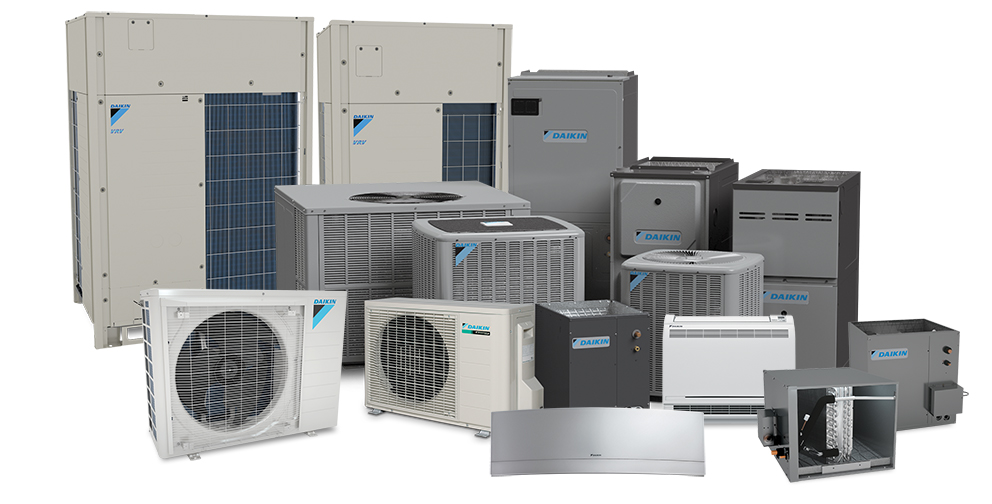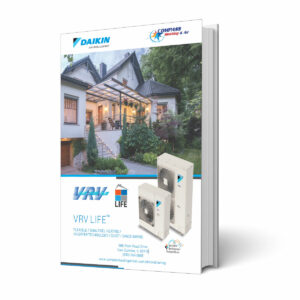HVAC Systems for Commercial Buildings: Guides and Options
 Commercial buildings come in all shapes and sizes, from small Mom & Pop shops, to huge office buildings and warehouses. Because commercial buildings have different demands than your home, they need special heating and cooling systems designed for their use to make sure you have an HVAC unit that will be energy efficient and cost-efffective.
Commercial buildings come in all shapes and sizes, from small Mom & Pop shops, to huge office buildings and warehouses. Because commercial buildings have different demands than your home, they need special heating and cooling systems designed for their use to make sure you have an HVAC unit that will be energy efficient and cost-efffective.
What to Know About Commercial HVAC Systems: Considerations
Large Commercial HVAC systems have the same general concerns you have for your home- you want to maintain good air quality, energy efficiency, and decent control over the comfort level in different parts of the space. But large systems need to do this at scale, and this has challenges.
Commercial HVAC Units and systems can generally be classified in the following Categories:
- Single Split Systems
- Multi-split systems
- Variable Air Volume (VRV) system
- Variable Refrigerant Flow (VRF) systems
- Constant Air Volume systems
 Single Split Systems– Single split systems have one compressor, an evaporator coil, a furnace, and refrigerant. Similar to a home system, these systems work well for smaller commercial buildings and server rooms, rather than bigger buildings with multiple rooms needing different controls. Each system runs independently, with every indoor unit having a corresponding outdoor unit.
Benefits: This works well when you have independent businesses taking up different spaces in a building, and each can be responsible for its own controls. This also means if one system breaks, not every system in the building goes down. These systems tend to be energy-efficient and cheaper to install.
Disadvantages: However, since each system has its separate indoor and outdoor unit, it can take up a lot of space.
Single Split Systems– Single split systems have one compressor, an evaporator coil, a furnace, and refrigerant. Similar to a home system, these systems work well for smaller commercial buildings and server rooms, rather than bigger buildings with multiple rooms needing different controls. Each system runs independently, with every indoor unit having a corresponding outdoor unit.
Benefits: This works well when you have independent businesses taking up different spaces in a building, and each can be responsible for its own controls. This also means if one system breaks, not every system in the building goes down. These systems tend to be energy-efficient and cheaper to install.
Disadvantages: However, since each system has its separate indoor and outdoor unit, it can take up a lot of space.
Best For: new buildings, renovated commercial spaces, cafes, shops, offices, server rooms- anywhere where you need independent control of temperature in a particular space, especially if you have multiple tenants.
- Multi-split systems are like a single split system, but with separate indoor systems hooking up to one larger outdoor system. These systems are well suited for large office spaces, doctor’s offices, diners and retail shops that have lots of walls or multiple floors in a building.
Benefits: These systems take up less space and preserves the look of the building from the outside. Systems don’t require ductwork, and they are very efficient, keeping costs down. Sensors can be installed to help control temperature based on occupancy, saving on energy costs. With up to 9 indoor units hooked up to a single outdoor units, multiple zones of comfort and temp control can be ac
Disadvantages: Installation costs are higher, and can take longer to install with various pipework needed.
Best for: retail shops, doctor’s offices, and restaurants
- Variable Refrigerant Volume (VRV) systems, like Daikin VRV systems, and Variable Refrigerant flow (VRF) systems are heat pumps/heat recovery systems that use refrigerant in the heating and cooling lines. They have a single condenser and multiple evaporator coils. These systems are well suited for medium to large commercial spaces, with mixed use, like office buildings or hotels. The system can deliver both heating and cooling where needed, and they are really efficient, so they are cost-effective to operate.
Benefits: Easy to install when a building is under construction. It installs quickly without interruption to current tenants/businesses. Efficient systems.
Disadvantages: Can be expensive to install, and if it does break down, the whole HVAC system will be affected.
Best for: Medium to large commercial spaces.
- Constant Air Volume systems are designed to work at full capacity until it meets the temperature required- this is best for large commercial manufacturing or warehouses where a temperature needs to remain constant for a long period of time.
Benefits: Good for spaces needing constant ventilation.
Disadvantages: Because it uses a fixed air volume, and runs constantly, this can result in high energy costs, and they don’t do a very good job in controlling humidity.
Best for: Mostly an option for specialized situations where constant ventilation is an issue- commercial and healthcare applications.
HVAC Installations for your Commercial Building in Elgin, IL
Our experts at Compass Heating & Air Conditioning can help you choose the perfect heating and cooling system for your commercial property. We understand how commercial building owners need to be concerned about costs, so we’ll help you choose a system that will give you and your customers the performance they need, while keeping energy bills low.
Our experience with Daikin VRV systems for both home and commercial use can help you get a system that will serve you well, while keeping energy costs low, keeping you and your customers equally happy!


